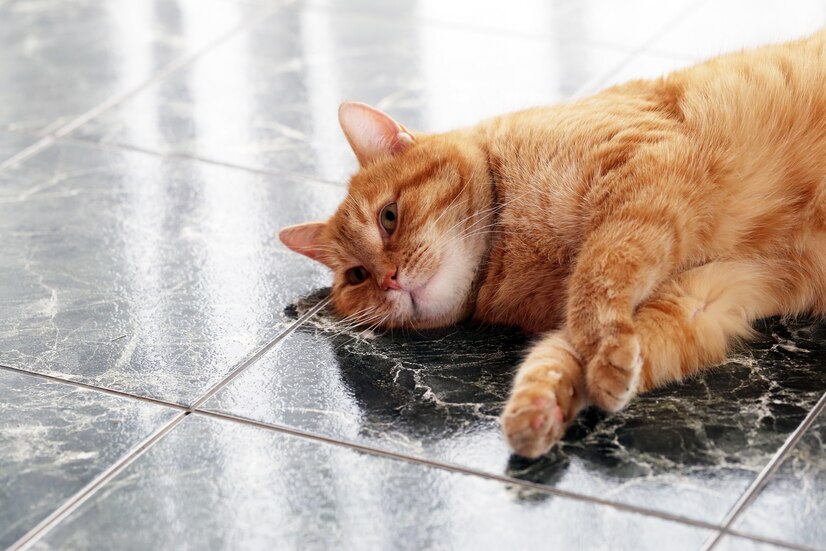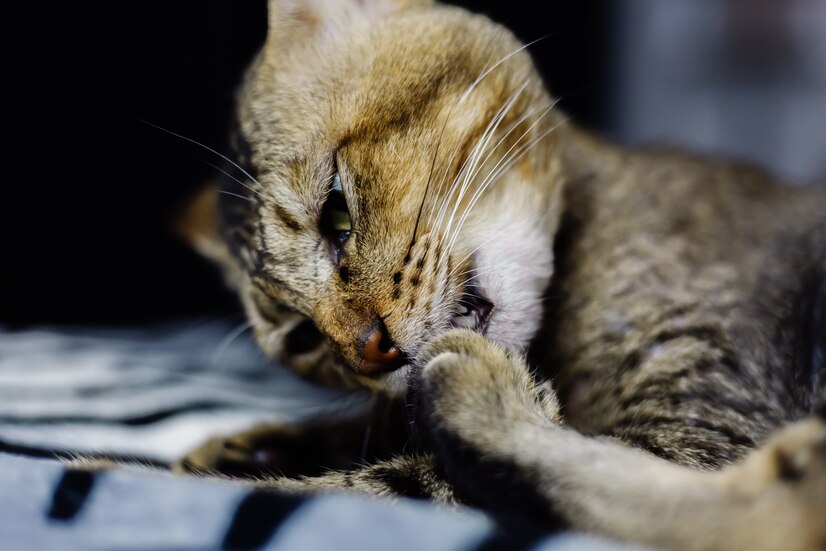Cats may not always show obvious indicators that something is wrong, therefore it is critical to understand dehydration symptoms and how to treat them. Hydration is critical to your cat’s health, affecting everything from energy levels to kidney function, and early detection can help avoid catastrophic problems.
Cats may not always show obvious indicators that something is wrong, therefore it is critical to understand dehydration symptoms and how to treat them. Hydration is critical to your cat’s health, affecting everything from energy levels to kidney function, and early detection can help avoid catastrophic problems.
Dehydration in Cats
How Can You Tell if a Cat is Dehydrated?
Identifying dehydration in cats can be challenging since they tend to mask discomfort. Simple tests can help. One way is to gently pinch the skin on the back of their neck or between the shoulder blades. In a hydrated cat, the skin snaps back quickly, but in a dehydrated cat, it may take longer to return.
Also, pay attention to sunken eyes, dry gums, and lethargy as other warning signs. To better understand your cat’s behavior, check out Why Does My Cat Follow Me Everywhere?, which dives into feline habits and subtle communication cues.
Symptoms of Dehydration in Cats
Spotting early signs of dehydration in your cat is essential to prevent more serious health issues. One key indicator is sunken eyes, which often appear dull in dehydrated cats. Another reliable sign is poor skin elasticity; you can test this by gently pinching the skin and observing how quickly it returns to its normal position.
Healthy gums should be moist, so if they feel dry or sticky, that could signal dehydration. Lethargy is also a concern; if your cat seems unusually tired or reluctant to move, it may be dehydrated.
Explore more about your cat’s physical and emotional signs of distress in our article on Why Does My Cat Follow Me to the Bathroom, which highlights other behavioral insights that may indicate underlying health issues.

Causes of Dehydration in Cats
Dehydration in cats can occur due to several factors. One significant cause is low water intake, particularly in cats that eat dry food, which tends to have lower moisture content. Kidney disease is another critical concern, as dehydration can be an early indication of this condition. It further stresses the kidneys and can potentially worsen the situation.
Frequent vomiting or diarrhea can rapidly deplete a cat’s fluids, increasing the risk of dehydration. Underlying health issues such as diabetes or thyroid disease can also heighten the likelihood of dehydration.
If you notice signs like excessive drinking, it’s essential to consult your vet, as these may indicate a condition needing attention. For more on recognizing early signs of kidney disease, check out our article on Kidney Disease in Cats: Early Signs You Shouldn’t Ignore.
How Do You Rehydrate a Cat?
If your cat is experiencing dehydration and you are interested in rehydrating your cat, then follow these steps:
- Offer Fresh Water Frequently: Keep multiple water stations throughout your home, best practice is away from food dishes, as some cats prefer separate areas for eating and drinking. Some cats enjoy running water, so try a pet fountain if they resist still water. Try to use fountain in blue color as many researches show that cats like blue color mostly.
- Switch to Wet Food: Since wet food contains about 70-80% water, incorporating it into your cat’s diet is a great way to boost hydration.
- Add Moisture to Dry Food: You can add water to dry food to create a soft, hydrated mix. Be sure to monitor this change to ensure they’re eating and digesting it well.
- Use Electrolyte Solutions: Certain cat-safe electrolytes, available through vets, can help balance hydration levels in cases where there’s been fluid loss due to vomiting or diarrhea. Always consult your vet before introducing any new supplements.
- IV Fluids for Severe Dehydration: If your cat’s dehydration is severe, intravenous fluids may be necessary. In-clinic treatment allows rapid rehydration under a vet’s care.
Will a Dehydrated Cat Still Pee?
Yes, but a dehydrated cat may urinate less frequently, and the urine may appear darker. Reduced urination is a sign the kidneys are trying to conserve water. It’s important to monitor litter box habits, as changes in frequency or consistency of urination may also signal underlying health issues, including kidney disease. Stages of Kidney Disease in Cats explores how this condition can impact your cat’s daily life and what signs to look out for as it progresses.
Can a Dehydrated Cat Drink Too Much Water?
Excessive water consumption may suggest health issues other than dehydration, such as diabetes or hyperthyroidism. A cat drinking more than usual may not be simply trying to hydrate; it could be responding to an underlying medical condition. Keeping track of your cat’s water intake might be useful to share with your veterinarian, especially if your cat suddenly begins drinking excessively.
For more curious cat-related questions, like “Can a Dog Get a Cat Pregnant?” take a look at Can a Dog Get a Cat Pregnant?, which addresses questions about the biology of pets and reproduction.
Preventing Dehydration in Cats
Prevention is often easier than cure. Here are some strategies to keep your cat hydrated:
- Multiple Water Stations: Cats are more likely to drink if fresh water is available in several places around the home.
- Monitor in Hot Weather: Cats are more prone to dehydration in warm conditions, so be especially cautious during summer or if your home lacks air conditioning.
When to See a Vet
If you’re concerned about dehydration symptoms or notice persistent changes in appetite, behavior, or water intake, consult a veterinarian promptly.



